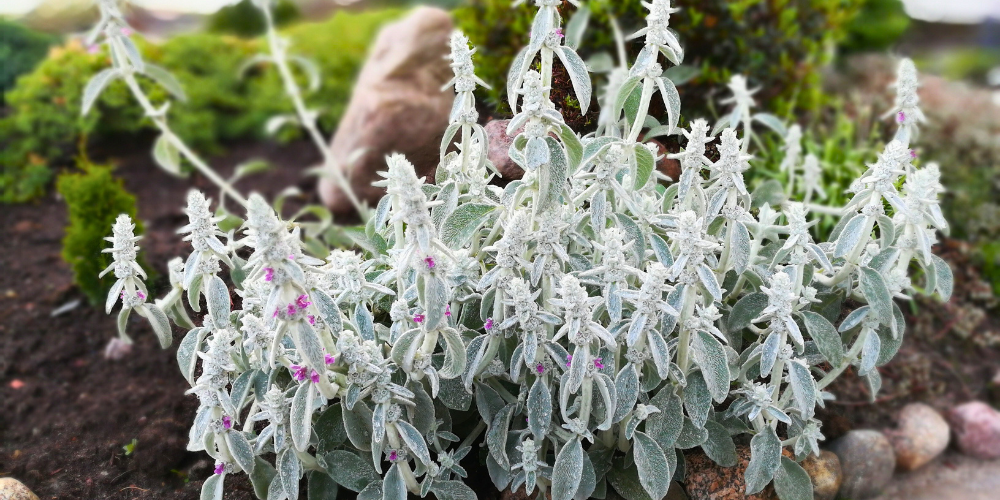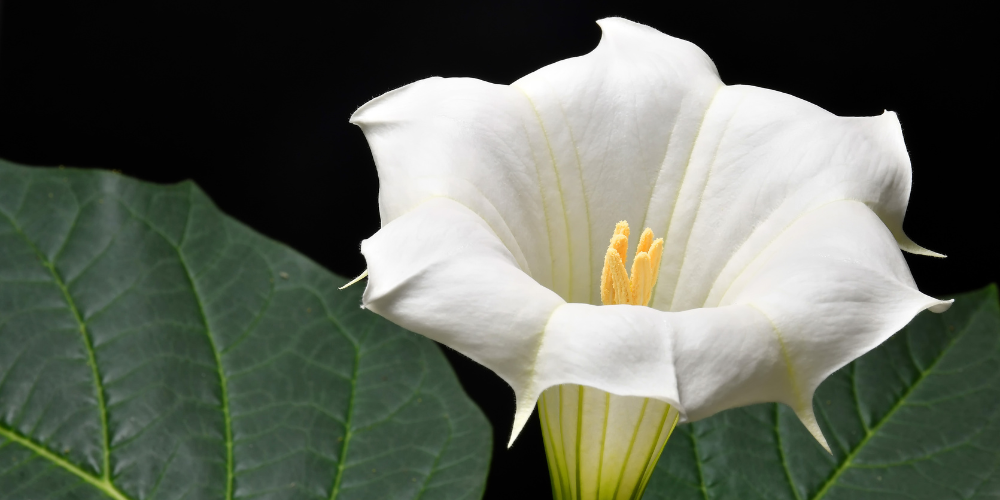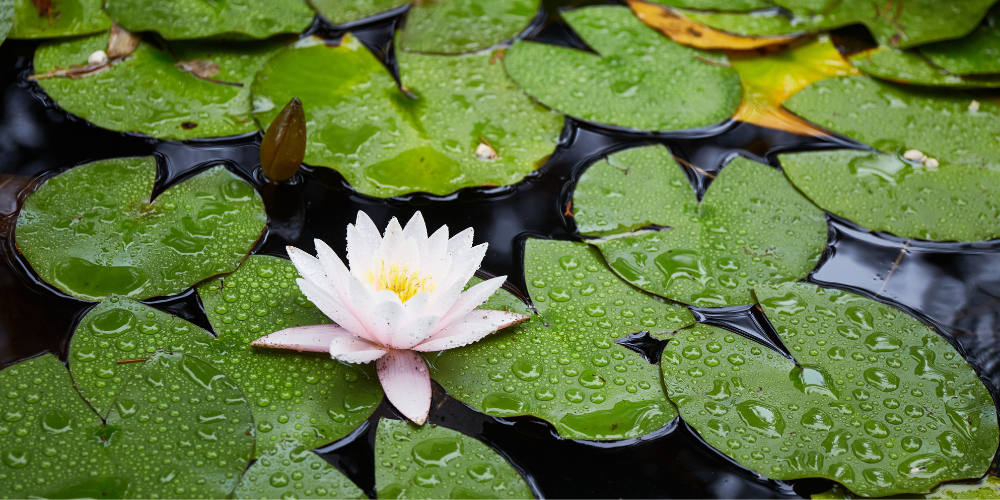If you've never heard of a moon garden before, you're in for a celestial treat! In this blog, we're jumping headfirst into the magic of the nocturnal plant life found right here in the Quad Cities.

What Is A Moon Garden?
As you might have already guessed, a moon garden is a uniquely designed garden that thrives under its namesake's soft, silvery glow. It's a deliberate collection of plants, trees, and features that come to life at night, creating an ethereal and enchanting ambiance.
In Iowa, moon gardens hold special significance, providing a haven for nocturnal pollinators and wildlife and helping to support local ecosystems. With their fragrant blooms and mesmerizing foliage, moon gardens offer a magical outdoor experience while also serving as a vital refuge for the creatures that play a crucial role in maintaining the ecological balance of our region.
Nurturing Nocturnal Pollinators with Moon Gardens
One of the most captivating and important aspects of moon gardens is their ability to attract nocturnal pollinators. By designing your garden to cater to their needs, you help support local wildlife while also creating a breathtaking nighttime oasis:
- Moths: Various moth species are active at night in Bettendorf's gardens and play a significant role in pollination. Examples include the Sphinx Moth and the Luna Moth.
- Bats: Did you know? Bats are some of Iowa's most essential nocturnal pollinators. They're particularly known for pollinating night-blooming flowers.
- Fireflies: While not traditional pollinators, fireflies can transfer pollen as they visit flowers while seeking nectar.
- Night-Time Insects: Beetles, certain species of bees, and other nocturnal insects also contribute to pollination in moon gardens and Iowa's natural ecosystems.
Creating a moon garden helps attract and support these fascinating nocturnal pollinators, contributing to our state's biodiversity and ecological health.

Moon Gardens for Beginners in The Quad Cities
Creating a moon garden isn't just about the right plants; it's also about the right design and color schemes. To capture the essence of moonlight, incorporate a palette of silver, green, and white into your garden. These colors, when combined, create a dreamy, ethereal atmosphere that truly shines under the moon's glow. Here are a few of our favorite plant recommendations to help you incorporate these color schemes into your moonlit landscape:
- Silver: To introduce a touch of silver, incorporate plants like Artemisia 'Silver Mound,' Lamb's Ear (Stachys byzantina), or Dusty Miller (Senecio cineraria). Their silver foliage shimmers in the moonlight, creating a mesmerizing effect.
- White: White flowers are the true stars of your moon garden. Choose varieties such as white Lilies, white Roses, and white Phlox. These blossoms reflect the moonlight while also filling the night air with a subtle fragrance.
- Green: Greenery forms the backbone of your moon garden. Opt for lush, dark green plants like Hostas, Ferns, and Euphorbias to provide a rich contrast to your garden's silver and white elements.

Swaying Plants for a Dreamy Vibe
To add to the ambiance of your moon garden, incorporate plants that sway gently in the breeze. When lit by moonlight, this gentle movement creates a mesmerizing and calming effect. Here are a few of our favorite swayers:
- Ornamental Grasses: Fountain Grass (Pennisetum) and Maiden Grass (Miscanthus) have gracefully-arching stems that sway with the wind, adding a touch of elegance to your nocturnal garden. Choose a variegated maiden grass like ‘Morning Light’ or ‘Vareigatus’ for hints of white with motion.
- Moonflower Vine (Ipomoea alba): As the name suggests, the Moonflower Vine opens its fragrant, white blossoms at night. Plant it along trellises or fences to create a living curtain of blooms that dance in the moonlight!
- Russian Sage (Perovskia atriplicifolia): With its delicate, lavender-colored blooms and dusty, feathery foliage, Russian Sage adds both movement and a subtle pop of color to your garden.
How to Attract Nighttime Pollinators and Other Wildlife
Moon gardens aren't just about the plants; they're about creating a holistic nocturnal ecosystem in your garden. Here are some additional elements to consider:
Ponds & Water Features: Adding a pond or water feature to your garden works wonders for attracting wildlife. Install a small pond and incorporate aquatic plants that bloom in the moonlight, like Water Lilies. The flowers will bring in a host of nocturnal pollinators, while the gentle splashing of water serves as a soothing lullaby for your nighttime visitors. If you are not up for the maintenance of a pond, Wallace’s offers a selection of ceramic water fountains with lights for an enchanting atmosphere.
Native Trees & Shrubs: Incorporating native trees and shrubs will further enhance your garden's wildlife-friendly aspect. These plants provide shelter and food for local fauna, creating a balanced ecosystem. For Bettendorf gardens, we recommend species like the Red Cedar or Serviceberry.
Moon Cycle Planting for Moon Gardens
Night-blooming flowers love the moonlight, but did you know there's an entire planting calendar that revolves around the moon cycles? Moon cycle planting, with its focus on lunar phases, offers a tailor-made approach for nurturing your moon garden. Here's how to do it right:
- New Moon: The new moon phase is ideal for sowing seeds of nocturnal plants like Moonflowers and Night-Blooming Jasmine. The increased gravitational pull during this phase supports strong germination, ensuring a vibrant start.
- First Quarter: As the moon's illumination grows, it coincides with the initial growth spurt of many nocturnal plants. This phase encourages above-ground growth, perfect for species such as Evening Primrose and Night-Blooming Cereus.
- Full Moon: The full moon, radiant and powerful, mirrors the zenith of nocturnal plant activity. This phase is perfect for transplanting and nurturing the overall health of your moon garden, as it aligns with the peak bloom and fragrance of flowers like white Lilies.
- Last Quarter: As the moon wanes, its gravitational pull subtly shifts the focus to root development, which is crucial for plants like Silver Mound Artemisia and Lamb's Ear. It's the perfect time for your plants to develop robust root systems that will support their growth above the soil in the coming months.
If you're looking for more nighttime inspiration in the Quad Cities, take a moonlit stroll on the Davenport Skybridge or play some Cosmic Golf at the Duck Creek Golf Course. Stop by and visit us at Wallace's Garden Center for more expert advice on starting a moon garden, while also picking up all of the supplies you'll need to get started!




